conservation and reconstruction of a wooden cart wheel
Within an archaeological context in the Netherlands, wood is exclusively preserved in permanently water-saturated and oxygen-free conditions. Wood found in GIA excavations is often in reasonable to good condition and, based on diagnostic features, worth depositing or exhibiting after research and publication. The wooden objects can be utensils, such as bowls or spoons, as well as parts of tools or architectural elements.
The excavations (2010-2011) in the Matsloot-Roderwolde polder – better known as De Onlanden (figure 1) – have yielded 267 pieces of diagnostic wood.
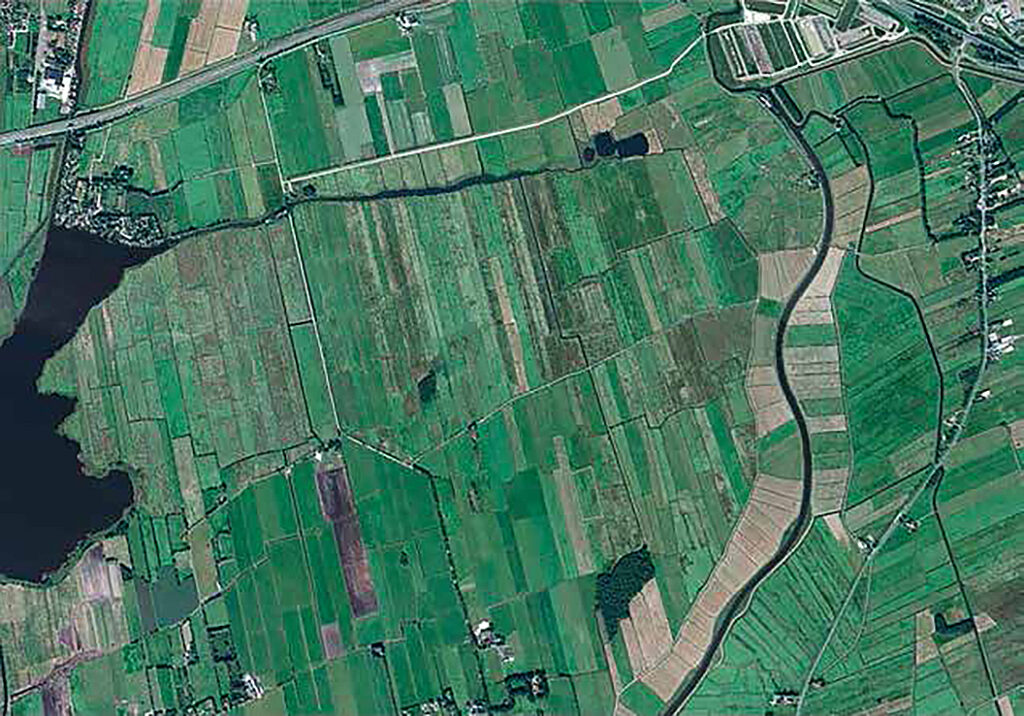
The most appealing wooden object related to the context of De Onlanden is the wooden cart wheel in figure 2. The area southeast of the city of Groningen was exploited for peat extraction between the 10th and 14th centuries AD. The peat served as fuel.
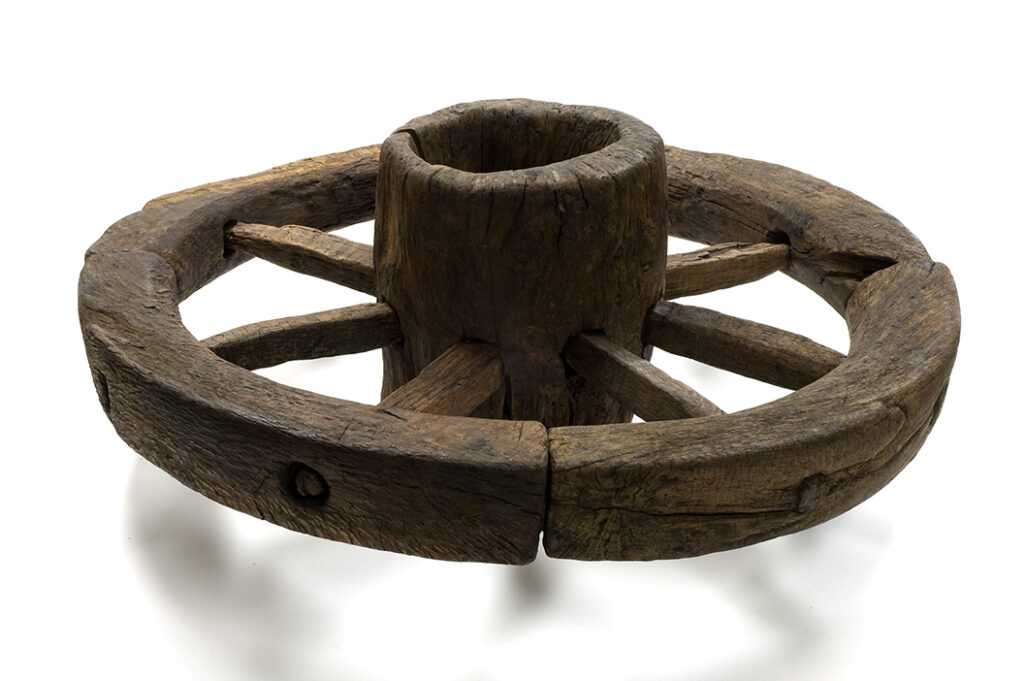
Around 2005, the LCM conducted research on the applicability of a preservation technique for water-saturated wood, which has found little acceptance so far. Rather surprising, as the results were already promising at the time of testing. The technique originally been researched and published in the 1970s. The principle is based on dewatering the wood using acetone, after which it is impregnated with an acetone-soluble, filling and stabilizing material. Treated objects are sturdy, feel “natural” in terms of skin and weight, and require no after-treatment. Research on objects that have been treated in this way remains possible, because the characteristics of the material and the type of wood are well accessible.
The technique has a restricted employability due to the use of acetone and the associated risks of organic solvents. However, it is ideal for smaller objects up to approximately 60 x 20 x 20 cm, because the risks are limited. Since 2012, the LCM has been operating a system especially built for the application, in order to be able to treat smaller wooden objects with this technique.
The wheel in figure 2 has been treated according to the method described above. It is a complete cart wheel from the location of house #3 (GIA116-V869). The wheel has been found in water-saturated conditions in the filling of a ditch, at 1.25 to 1.50 m -NAP1 (figure 3). The highest parts of the wheel were lightly touched by the excavator during the trench work.

The wheel is larger than the aforementioned maximum dimensions, but was recovered in pieces. The fragments were then stored wet, cool and in a dark environment. The condition of the parts varied widely, ranging from good (firm, non-spongy, non-cracked or laminated) on some rim parts, to poor (soft, spongy, deformed when squeezed, cracked or laminated) on the hub (figure 4). The hub also shows a large number of woodworm holes (figure 5).

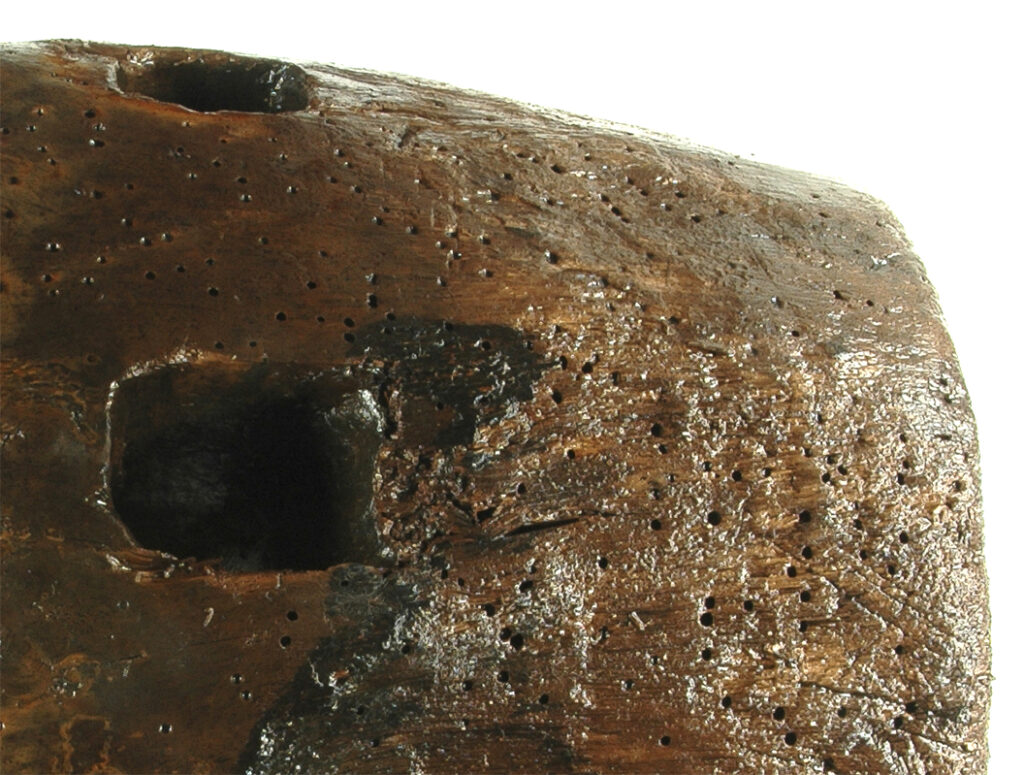
The wood has been investigated at the LCM. The rim parts, connecting pins and spokes are made of oak wood, an obvious choice of material when it comes to strength and durability. The hub, on the other hand, is a hollowed-out trunk of an alder. Alder is less hard and durable compared to oak, however more elastic and therefore better able to absorb shocks while driving. The method of manufacturing the wheel is a transition between an older technique – which consists of using a hollowed hub in combination with a closed disc wheel – and a newer technique with spokes and rim parts.
An interesting detail is the faceted bevel of the rim parts on the inside (figures 6-7). The wheel is dated to the 13th-14th centuries.

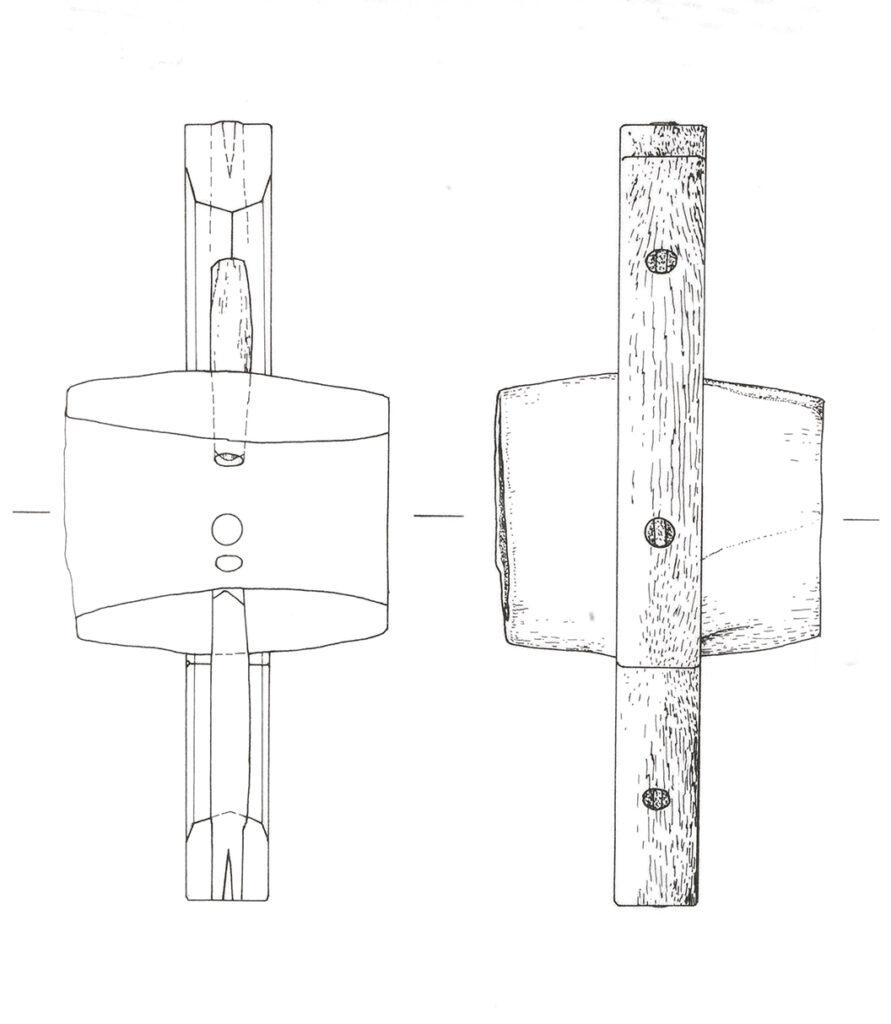
conservation and reconstruction
First, the fragments were cleaned under running tap water (Figure 8). Subsequently they were treated according to the acetone/resin method, impregnated with rosin (Figures 9 and 10) and thereafter reconstructed using Paraloid B72 (Figures 11 and 12). Polyethylene glycol (PEG) treatment would have resulted in a greasy surface that Paraloid B72 cannot adhere to.
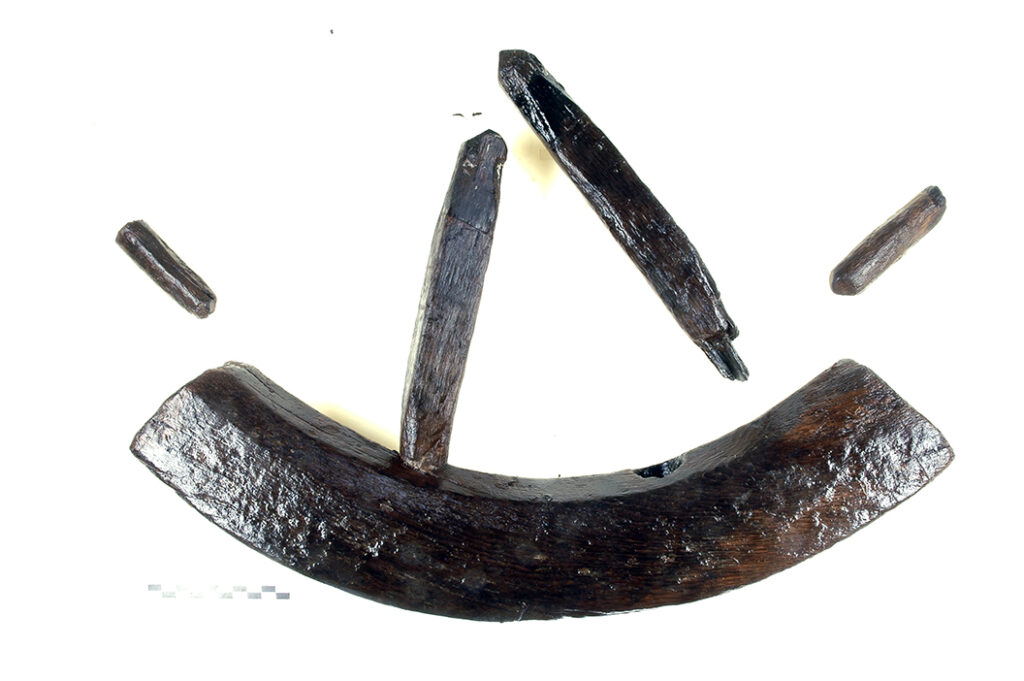
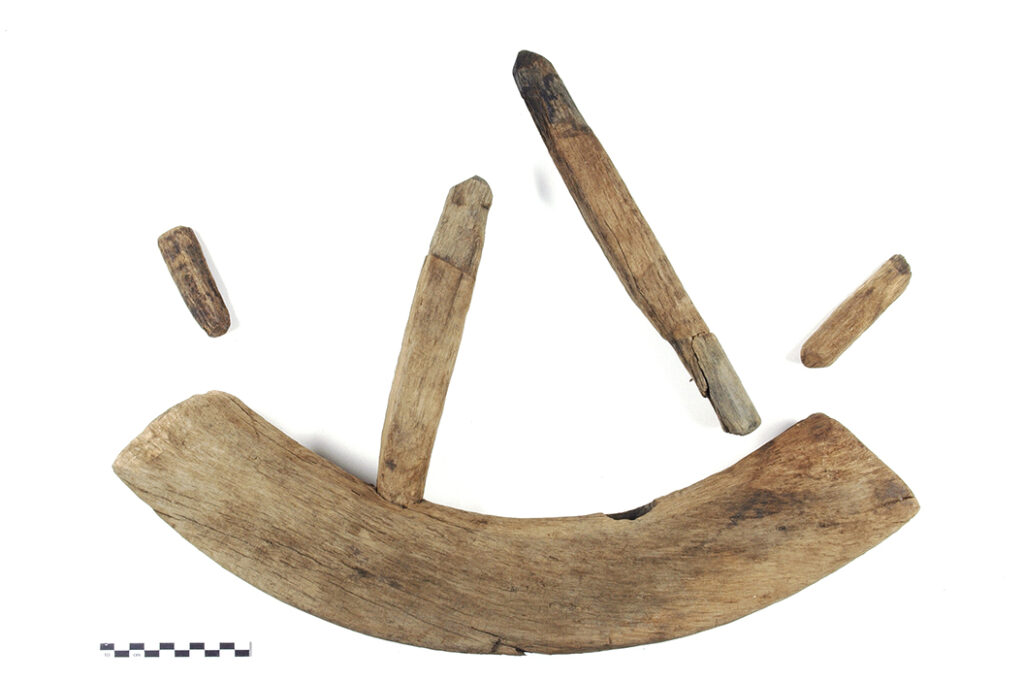
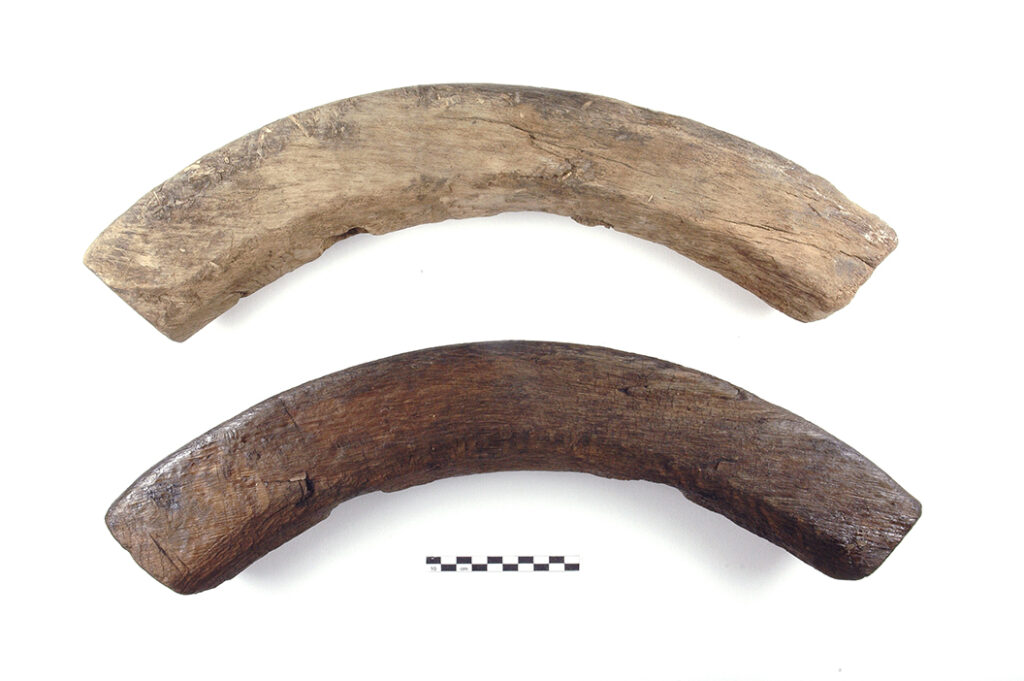

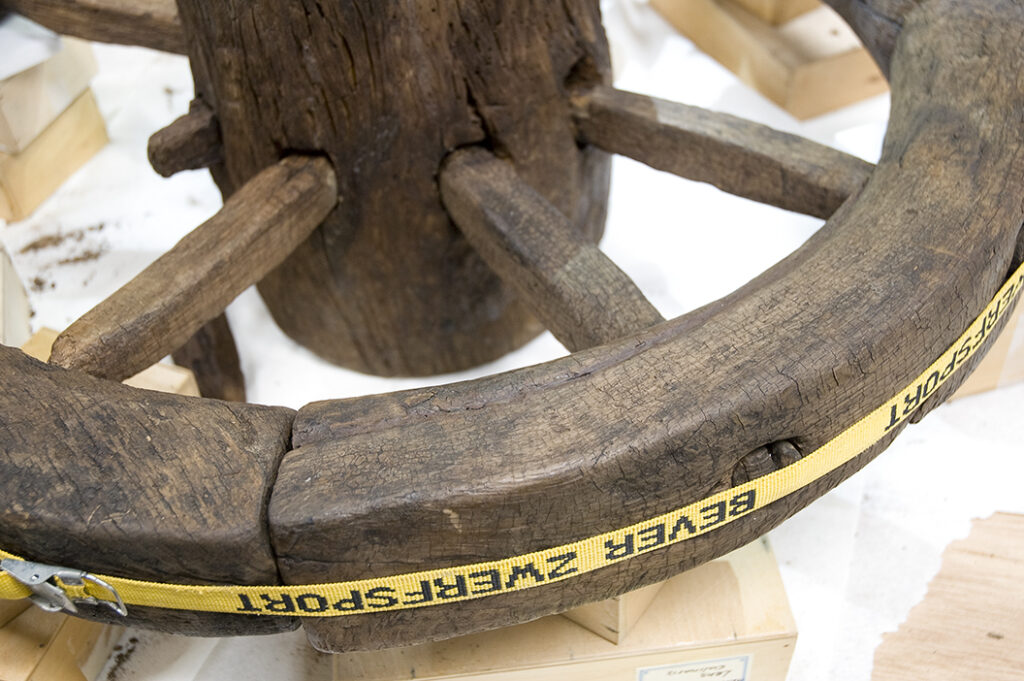
The connecting pins for the rim parts were broken or weakened to such an extent that they could not be used in the reconstruction. It would create a serious risk for breakage during handling or display. For that reason, four new pens have been cut to size from long-dried ash wood (Figures 13 and 14). Prior to their placement in the reconstruction, they have been fully impregnated with 10% Paraloid B72 in acetone to improve adhesion and to prevent hygroscopic action of the wood.
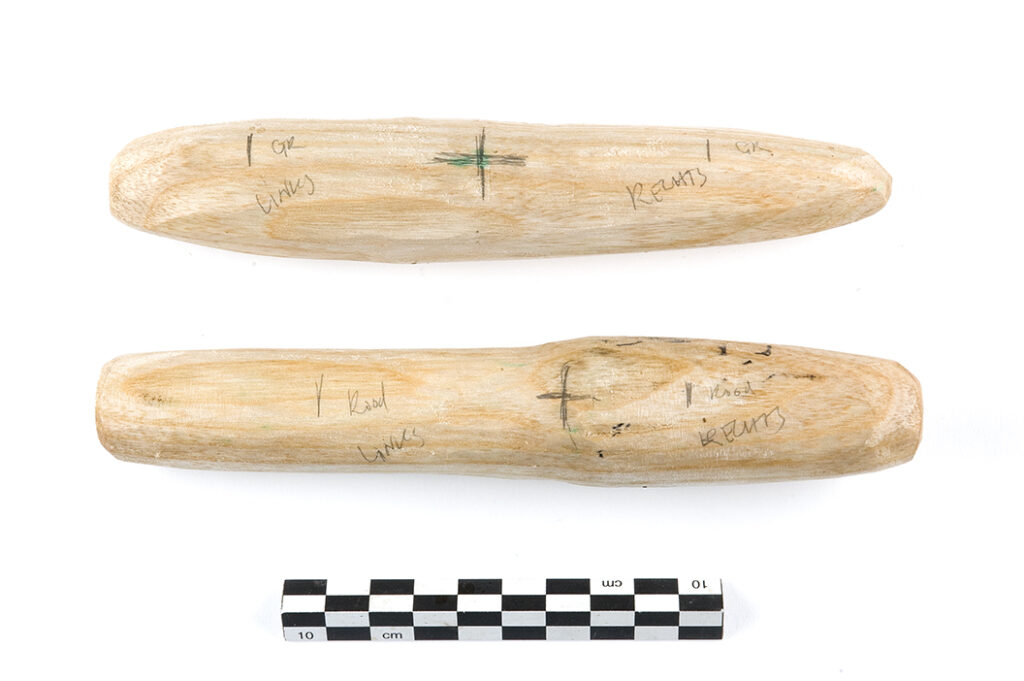
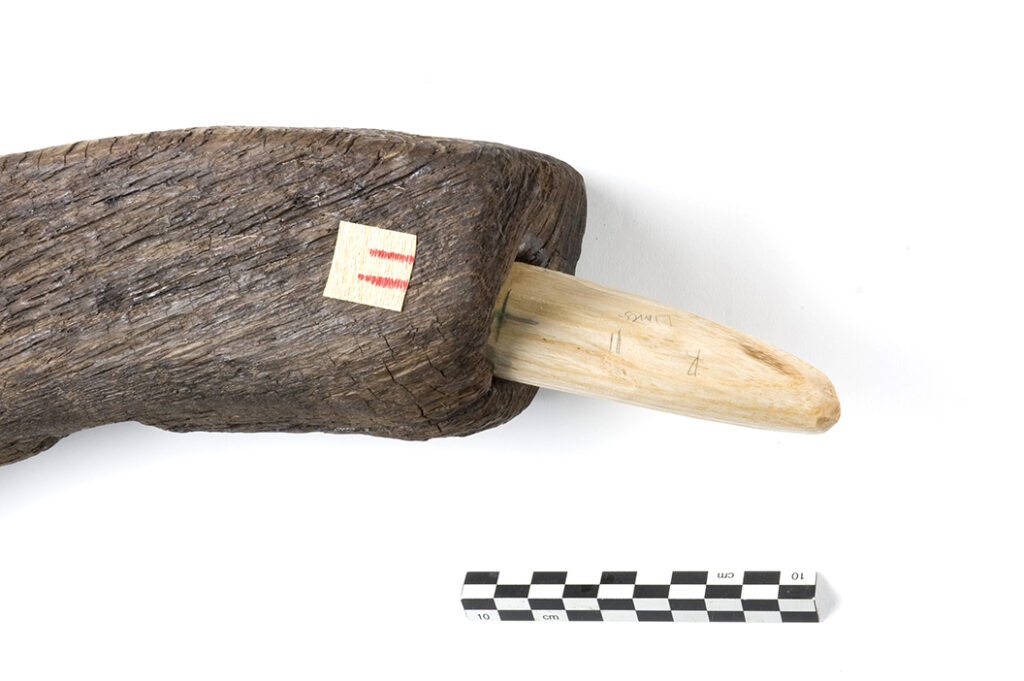
After placement of the pins, areas still visible have been tinted with acrylic paint in an appropriate dark brown tone (Figure 15).
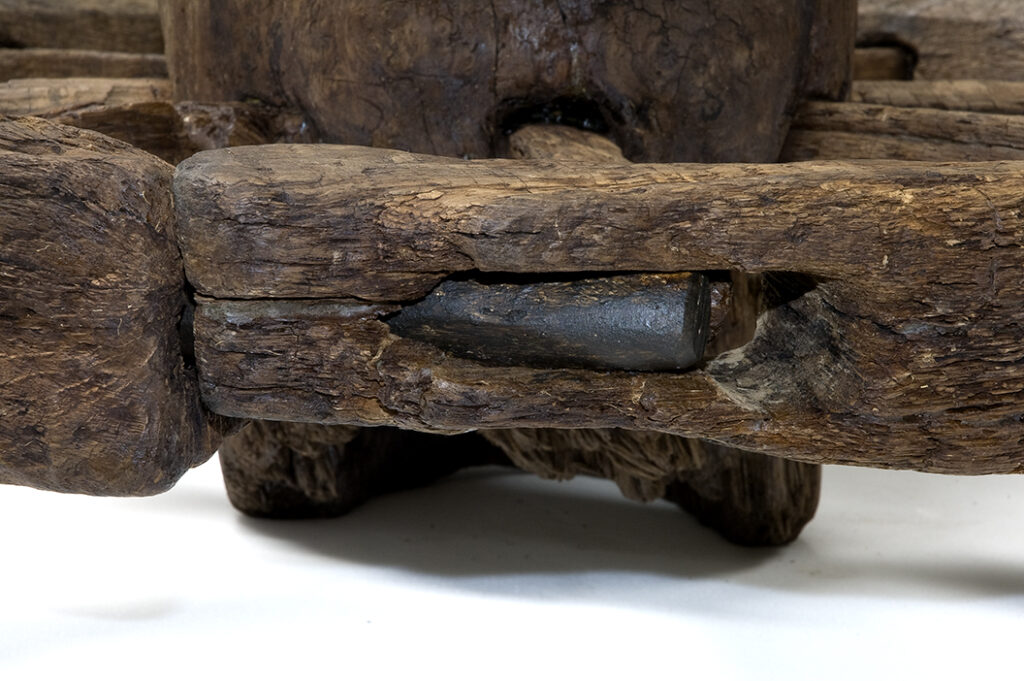
If necessary to improve internal coherence, cracks in rim parts or the hub have been filled with Paraloid B72, and subsequently matted with a brown tone pre-colored, acid-free microcrystalline wax (Figures 2 and 16). The end result is stable enough to store and exhibit the object under normal, varying indoor climate conditions (approx. 40-85% RH at 10-25oC).
Passive conservation is not necessary, however it is applied to avoid any risk of damage or change. Re- or after-treatment, such as needed with PEG application, is redundant.
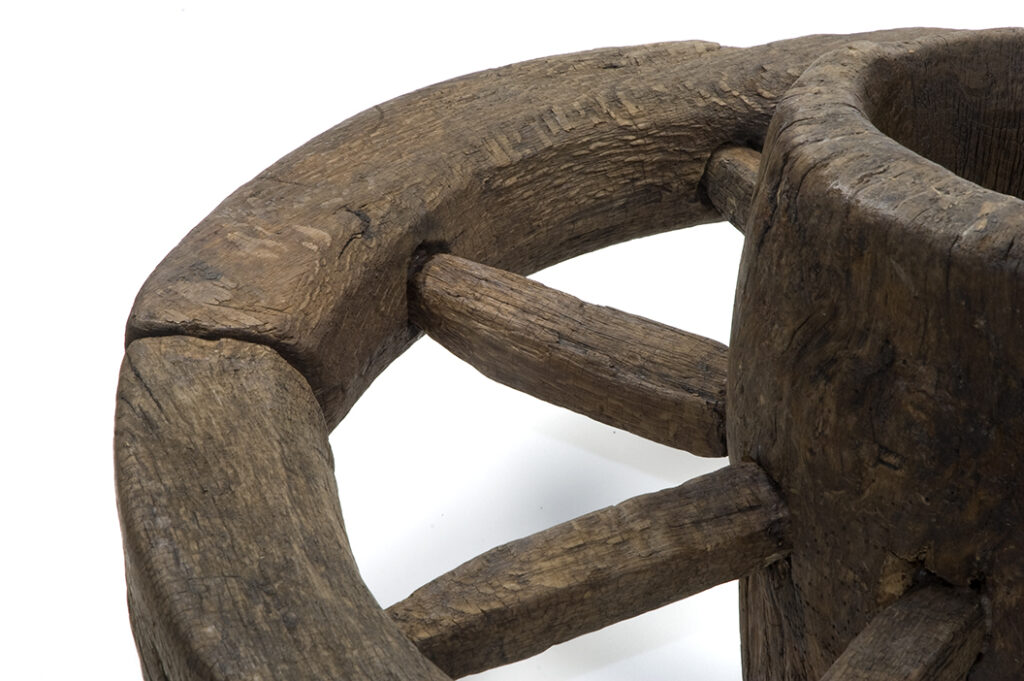
further reading
- Huisplaatsen in De Onlanden. De geschiedenis van een Drents veenweidegebied; J.A.W. Nicolay (red.); Groningen Archaeological Studies 34; 2018; ISBN-13: 9789492444721 (in Dutch, with summaries in English)
1 NAP: Normaal Amsterdams Peil, or Amsterdam Ordnance Datum is a vertical datum in use in large parts of Western Europe. Originally created for use in the Netherlands, its height was used by Prussia in 1879 for defining Normalnull, and in 1955 by other European countries. (source definition: Wikipedia (2020))
2014 © GIA
